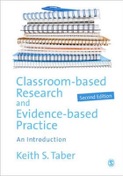Educational Research Methods

A site to support teaching and learning...
Research design
“Carrying out research techniques will only comprise research when they are part of a coherent research plan, or research design, which needs to be informed by a research strategy. This is what is usually described as methodology: an educational research methodology guides the selection and sequencing of appropriate techniques in a study.” (Taber, 2013: 43)
“I do not believe this manuscript should be published. More directly, I do not believe this research can ever be published. No revision of text will ultimately be able to redress the fatal design error of the study.”
Critical comment from a peer review report of an article submitted for publication
This is a personal site of Keith S. Taber to support teaching of educational research methods.
(Dr Keith Taber is Professor of Science Education at the University of Cambridge.)
2015-2016


Taber, K. S. (2013). Classroom-based Research and Evidence-based Practice: An introduction (2nd ed.). London: Sage.
(Image after Taber, K. S. (2014). Methodological issues in science education research: a perspective from the philosophy of science. In M. R. Matthews (Ed.), International Handbook of Research in History and Philosophy for Science and Mathematics Education. Dordrecht: Springer.)
Research is generally designed, in outline at least, before data collection commences. The extent to which research designs are flexible, depends upon the paradigmatic commitments underpinning the research. Designs in confirmatory research tends to be fixed, but in discovery research there is more flexibility, and scope for ‘emergent’ research design. In grounded theory studies, the research design is said to be emergent as the final form becomes clear during the study after data analysis has commenced.
Multiple methods and coherence
Some research designs are based around a single approach to collecting and analysing data (i.e. method or technique) and others involve multiple techniques. Sometimes in studies triangulation will be used to collect different different ‘slices’ of data pertaining to one research question. Sometimes analytical pluralism may be indicated where the same data set is analysed through several distinct analytical ‘lenses’. However, choices of data collection and analysis techniques should always be consistent with the conceptual framework informing the study, any theoretical perspective adopted, and the way in which research questions have been framed.
(A simple tool is available to help map out and analyse research designs.)
